Also available as Adobe PDF (2.2 MB)
GEORGIE WETTENHALL
Ecological Engineering (www.ecoeng.com.au, mail@ecoeng.com.au)
Removing pollutants from urban stormwater runoff is a key component of the Water Sensitive Urban Design (WSUD) philosophy. Treating urban runoff can add value to the urban landscape as well as protecting downstream receiving-waters, providing a source of water suitable for some reuse applications. Creative selection of the type, shape and location of stormwater treatment elements enables runoff from urban areas to be treated in the streetscape rather than using a more traditional “end of pipe” treatment approach. Small vegetated stormwater treatment elements such as raingardens and street trees can add interest to streetscapes, use a wide range of vegetation and provide attractive self-irrigating landscape features. Stormwater treatment elements can be integrated with streetscape features such as traffic calming devices, parking bays and seating.
This paper presents examples of water sensitive elements in streetscapes and highlights some of the design considerations and how the treatment systems were tailored to the particular constraints and opportunities of their sites.
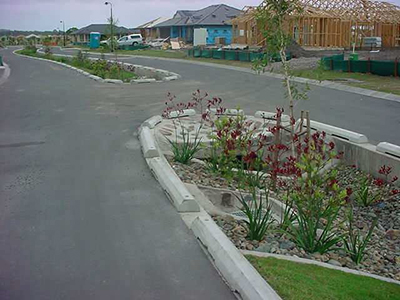
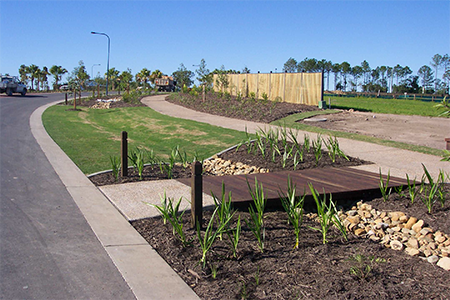
Urban development in a catchment leads to significant changes to the natural water cycle of the catchment. It is well documented that urbanization leads to increased magnitude and volume runoff and that urban stormwater carries many pollutants generated from urban activities (e.g. cars). Urban pollutant loads, together with hydrologic impacts have resulted in progressive deterioration of the environmental values of aquatic ecosystems in urban areas. Directing urban runoff to vegetated treatment systems such as raingardens or wetlands prior to discharging into waterways provides some retardation of flows and significant reduction of pollutant loads.
When the concept of treating urban runoff was first adopted in Australia, treatment systems were generally located at the downstream end of a catchment (e.g. regional treatment wetlands). These regional systems can form attractive features in open space areas however they rely on a suitable area of open space being available at the downstream end of a catchment. More recently, opportunities for treating stormwater runoff in the streetscape have been realized. Streetscape stormwater treatment can be used to create attractive green streets and help street users make the connection between stormwater runoff and environmental impacts.
Raingardens are particularly suitable for streetscape stormwater treatment as they can achieve high pollutant load reductions in a smaller footprint than other treatment elements. The key components of raingardens are shown in the diagram below.
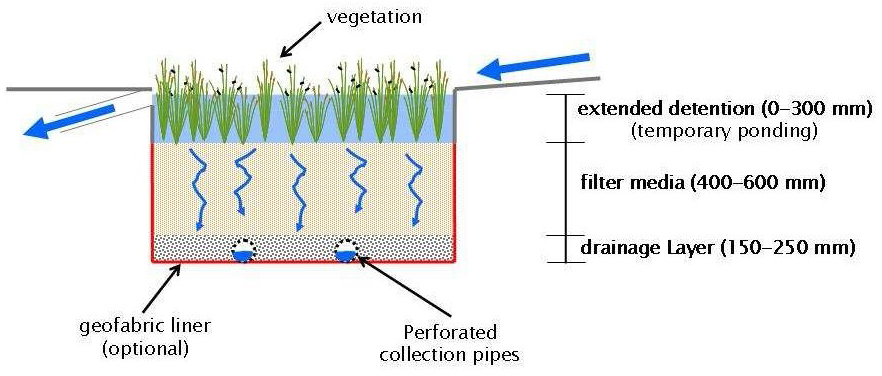
There is currently no requirement or objectives for stormwater treatment in South Australia. In Victoria and NSW, the following best practice objectives have been set for treating runoff from urban areas:
Meeting these target pollutant reductions will also ensure removal of a broader range of urban stormwater pollutants (e.g. hydrocarbons and organic matter). The pollutant loads generated from catchments in Adelaide are roughly proportional to the impervious catchment area. The chart below shows the pollutant load reductions using raingardens predicted by the Model for Urban Stormwater Improvement Conceptualisation (MUSIC) for Adelaide.
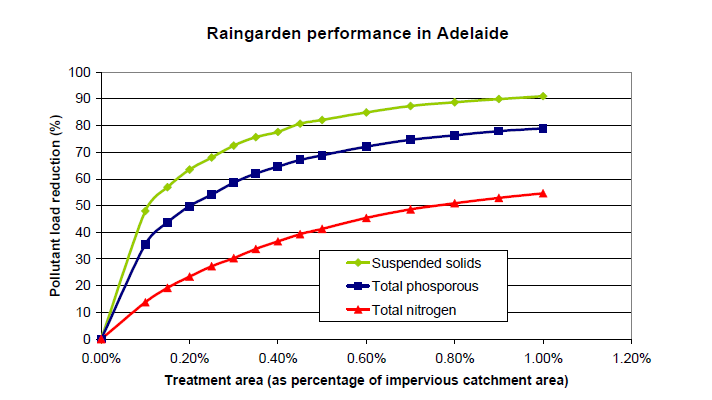
There is considerable flexibility available in designing a streetscape stormwater treatment strategy. A strategy is generally developed by a WSUD specialist in close consultation with urban designers and landscape architects. Appropriately sized vegetated swales, raingardens and wetlands can be integrated into the streetscape. A wide range of vegetation can be used in these systems from grasses and sedges to trees and shrubs. Systems can take many forms for example having hard formal edging and modern shapes to more natural looking systems.
Treatment elements can be incorporated with other streetscape elements, thus reducing the land take of stormwater treatment. Street trees have been used as the vegetation in raingardens, for example in Darlinghurst Rd (Kings Cross) and Bourke St extension (Melbourne).
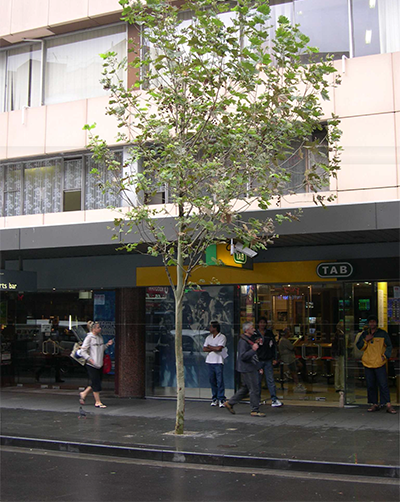
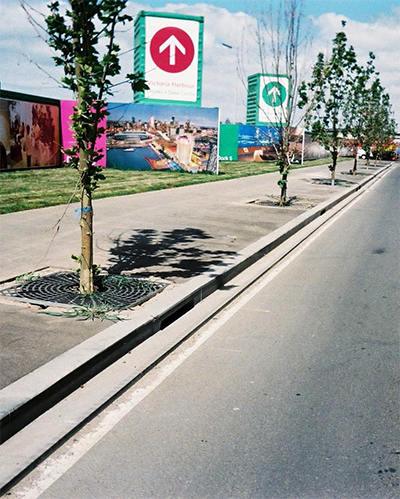
Raingardens can be integrated into traffic calming devices, for example in Mernda Villages and Parker St in Victoria.
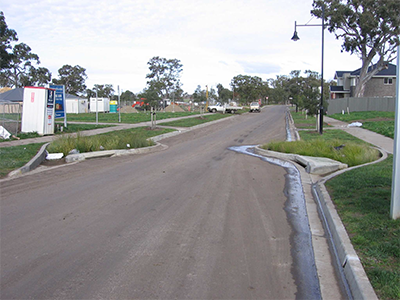
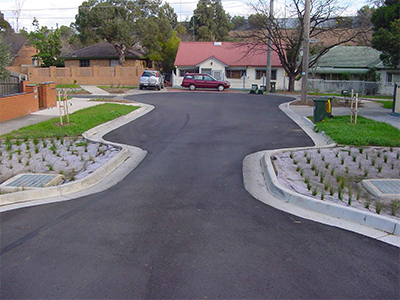
In Batman Avenue in Victoria, creative design has enabled street trees edging to be used as seating.
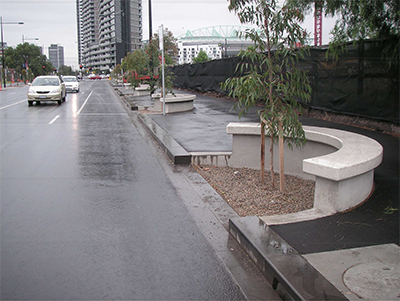
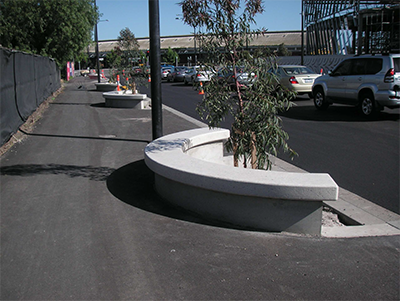
There are many examples throughout Australia and overseas of creative integration of stormwater treatment into the streetscape both for greenfield sites and retrofits. These systems have a functional role in removing pollutants and also create self-irrigating green elements in the streetscape or car parks that can improve the appearance of a street and the experience of street users. Stormwater treatment technologies have been proven and a stormwater treatment strategy should be standard for all new urban development.